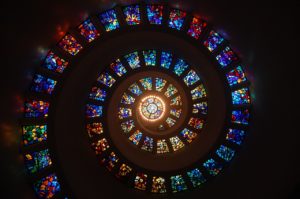Zhang Xiaogang was born on 1958 in Kunming, Yunnan province,CHINA. Zhang Xiaogang’s paintings engage with the notion of identity within the Chinese culture of collectivism. Basing his work around the concept of *family* *immediate, extended, and societal * Zhang’s portraits depict an endless genealogy of imagined forebears and progenitors, each unnervingly similar and distinguished by minute difference. Often painted in black and white, Zhang’s portraits translate the language of photography into paint. Drawingfrom the generic quality of formal photo studio poses and greyscale palette, Zhang’s figures are nameless and timeless: a series of individual histories represented within the strict confines of formula.
Zhang Xiaogang’s work is usually based on its iconography and style, which reveal a strong consistency whether the works are studied from the angle of artistic intention or personal history. If we look at the *phenomenon* of Zhang Xiaogang, and consider elements of his art that have helped to establish his position in the art world, we can look away from Zhang’s psychological and personal history, to focus on his contributions to artistic language in contemporary Chinese art. Zhang Xiaogang’s art has become a canon of contemporary Chinese oil painting, and its merits depend very much on the fact that he has found new solutions to harnessing western classical academic technique (a standard in Chinese academies) to turn it into an indigenous artistic language. Zhang Xiaogang is very much a product of the Chinese art academy system, and out of this heritage he has developed an iconography and identified a special sensibility that in many ways define this era. Because Zhang’s footing is within the academy system, therefore the system may also claim credit for his success.
Zhang has achieved this by bringing together a number of polarities. Zhang uses a technique based on western academic realism to suggest unreality and illusion; he portrays a private insular world by means of a public artistic language, hinting at unspoken public trauma through individuals* secrets. Over twenty years, Zhang has managed to resolve his own stylistic passage from an early expressionistic period to a form of classicism.This solution makes a cultural connection with the pioneering era when western painting technique was first successfully borrowed by popular art to portray the figure, when it was adapted to mass culture in the spirit of popular folk taste. It is therefore close to traditional Chinese taste, hence successful in making claims to be a new paradigm.
Selected Exhibitions:-
2000
* Max Protetch Gallery, New York
1999
* Galerie de France, Paris
1989
* Sichuan Academy of Fine Arts,Chongqing
Conclusions:
Zhang Xiaogang’s work is usually based on its iconography and style, which reveal a strong consistency whether the works are studied from the angle of artistic intention or personal history. He had focused on his contributions to artistic language in contemporary Chinese art.
Submitted by:Saatchi-GalleryView Zhang Xiaogang paintings, biography, solo exhibitions, group exhibitions and resource of Zhang Xiaogang artist. View art online at The Saatchi Gallery – London contemporary art gallery http://www.saatchi-gallery.co.uk/artists/zhang_xiaogang.htm Zhang Xiaogang |





